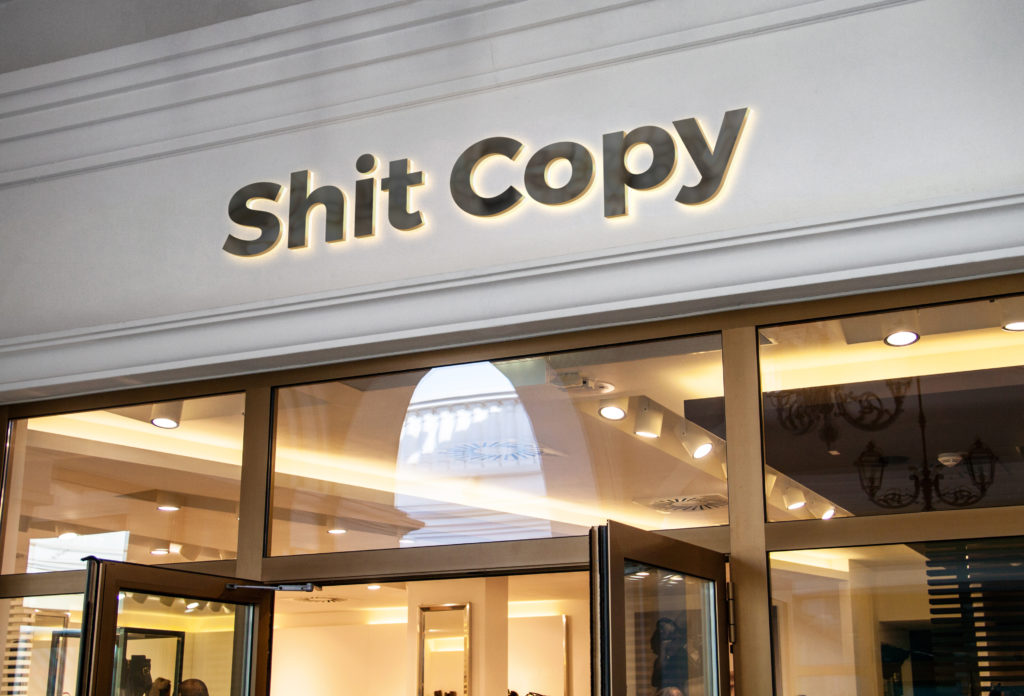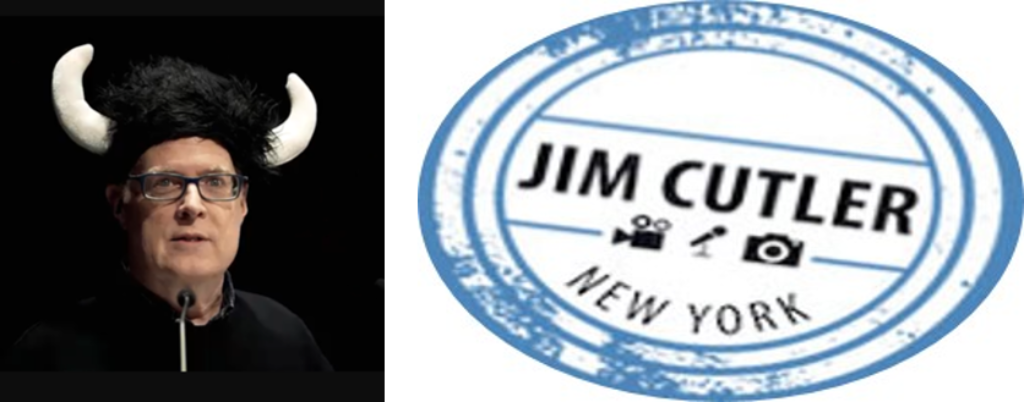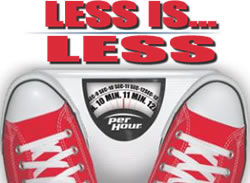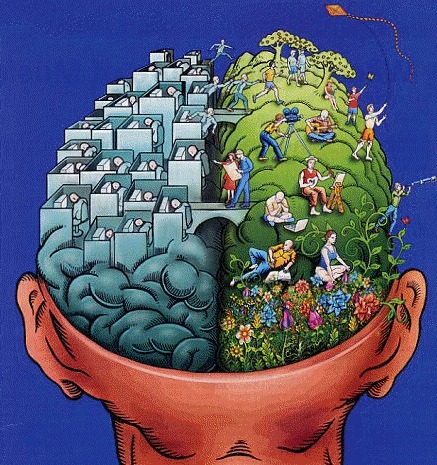Hopefully, today’s post is a welcome respite from the coronavirus crisis. Sending my positive wishes and vibes to all. – FJ
It’s become a cliche to discuss eroding attention spans, complete with those stories comparing us to goldfish (the goldfish have longer attention spans).
VO and creative copywriting savant, Jim Culter, tackled this issue in a spirited talk a few weeks back at Jason Barrett’s Sports Radio Summit in New York City. Chances are you’ve not met Jim, but you’re heard him – thousands of times – voicing some of the finest radio and TV stations, networks, shows, and other content. Aside from some of the most prominent stations in radio, you’ve heard Jim on CBS, Jimmy Kimmel, Animal Planet, the CW, and countless documentaries.
But Jim is no mindless copy reader. He prides himself on not just his voice art and writing, but his recognition of what will work and what very likely is pure crap. After all, the  guy does something like 24,000 sessions a year (yeah, do the math). And he’s done it at that crazy rate – for decades.
guy does something like 24,000 sessions a year (yeah, do the math). And he’s done it at that crazy rate – for decades.
Every piece of copy imaginable ends up in his in-box. The good, the bad, and well, the shit. And while many stations spend a lot of money on facilities and talent like him, the writing often takes a back seat.
In his talk at Jason’s Summit, Jim focused on time, timing, and yes, attention spans. Most of us have old airchecks where we routinely hear :60 (or longer) pieces of production and imaging. And in the filter of PPM, the Internet, and our phones, we know how focused content has had to become in order to be heard.
 Jim spent considerable time convincing a room of Sports Radio mavens about how 6 seconds is more than enough time to get the point across, make a joke, and deliver a message that sticks.
Jim spent considerable time convincing a room of Sports Radio mavens about how 6 seconds is more than enough time to get the point across, make a joke, and deliver a message that sticks.
As virtually everything we consume becomes more compressed, it puts accompanying pressure on everyone in the process – writers, producers, and talent – to find ways to deliver in shorter time limits.
That’s why when I ran across this story in The Drum – “How short can you go? Inside the question for the two-second ad” – I thought back to Jim’s prescient talk.
Katie Deighton talks about “blinks,” a concept first introduced in 2009 by Miller High Life beer as stealthy, pre-game Super Bowl ads. By the way, they worked.
Radio pros, however, might recall this concept appeared five years earlier, thanks to Clear Channel (as the company was known as back then) and John Hogan, its former CEO.
“Blinks” were part of an umbrella “Less Is More” campaign that was a bold reduced inventory campaign. Notably, it was launched years earlier than Arbitron made PPM the ratings “currency” in the biggest radio markets.
The effort didn’t work out well for Clear Channel. Less than four  years later, Hogan pronounced it “yesterday’s news.” I even blogged about its demise in September 2008 – “Less Is Less.’
years later, Hogan pronounced it “yesterday’s news.” I even blogged about its demise in September 2008 – “Less Is Less.’
Sadly, “blinks” were thrown out with the “Less Is More” bath water, if you’ll excuse the analogy. And yet, creators have been looking for ways to make these mini-ads work.
Deighton quotes P&G’s Marc Pritchard who made this point three years ago:
“For too long, we flooded digital media with 30-second ads, treating it like another form of TV. But now that we have the data, it shows that the average ad viewing time can be as low as 1.7 seconds. We stopped wasting money on 30-second ads, and we’re now designing ads to work in two seconds.”
While it’s unclear whether P&G is still going down this creative rabbit hole, other creatives are pursuing the two second ad. But other agencies are, aggressively testing the limits of advertising time, in search of both attention and retention.
IPG Mediabrands is all over this idea of front-loading the first two seconds of spots with brand, logo, and CTA (call to action). While this may crimp the style of the creative group, it ensures more consumers will get the message.
Deighton quotes Becky Bringerhoff, an Arnold Worldwide copywriter who believes humor can work especially well in short messages “since absurdity lives well in bursts.”
Perhaps your cluster’s production director or your sales team won’t have much success selling and creating two-second ads. But for station promos, events, cross-promotion, appointment setting, and personality reinforcement, this short-short-form could be a perfect creative vehicle. Instead of playing that “best bit” from your morning show (that rambles on for :45 or more), think about how to sum up their show with a “blink.” Challenging? Yes. Effective? Definitely.
I have a client (not a former Clear Channel station) that sold (OK, probably bonused) “blinks” when they first changed formats. I believe they called them “flashes,” but they were the same thing, marketed to advertisers who wanted to take a flyer on something new.
In the early months of this station’s fresh start, I conducted a number of Listener Advisory Groups to help guide its progress. And in every session – without prompting – respondents remembered these staccato messages – including naming the advertisers. In fact, these mini-ads which ran between songs became topics of conversations in the groups, standing happily apart from Kars-For-Kids and Shane Company ads.
This trend is being driven less by the advertising community and  more by the way our brains are being reconfigured by technology.
more by the way our brains are being reconfigured by technology.
We should be paying attention to these trends, and people like Jim Cutler who are watching the effectiveness of 30 and 60-second ads lose their potency.
As Jim reminded me, “I see EVERYTHING every week from the whole country. I’m in a unique place to see the great, and the people who are in trouble.”
Let’s make sure we’re aligned with the former.
Thanks to Jim and Dawn Cutler for their help with this post. You can connect with Jim here.
- What To Do If Your Radio Station Goes Through A Midlife Crisis - April 25, 2025
- A 2020 Lesson?It Could All Be Gone In A Flash - April 24, 2025
- How AI Can Give Radio Personalities More…PERSONALITY - April 23, 2025




Sure wish you would’ve included examples of a 5-second ad that leaves a meaningful impression. In this overcommunicated world, I don’t believe you can, regardless of the copy. And especially when buried in a seven minute spot break.
Actually, we ran those “flashes” in between songs – and they stuck. For established brands – a simple message (Weekend sale!) sticks. For a new/newer brand, a great awareness builder (What’s Door Dash?)
Beau, I heard one break of 17 straight minutes of spots on the stream of a Chicago radio station this week. The station might not even know that the streaming service is inserting even more spots covering over their content to produce a 17 minute straight spot break of different message after message. It was unlistenable with all the other alternatives I have calling for my attention. You are so right that a five second spot would get lost in that. I think what Fred is talking about is the success of having it alone between a couple of songs. But buried in a spot break, you’re 100% right.
94.7 WLS-FM here in Chicago runs five second ads over song intros during music sweeps. Not sure about their recall effectiveness or economic impact but they’re still airing on a regular basis and have been for some time.
Thanks for sharing this, Dave.
On a side note, Jim was my Production Wizard in Boston at WZOU — he was incredibly brilliant then and has been a shining light for a very long time! THEE BEST!
Of that there is no doubt.
This blink thing has been my crusade for some ‘time’ now.
Over the one year I was able to write and produce them—
They brought in over $250,000 in unique revenue.
Easy to conceive and easy to produce.
Thus we were always able to send out the salespeople with a spec.
They were also a catalyst for clients on the fence about commitment.
Eventually, the phone just started ringing with messages like:
“Hey what was that?…We want one of those.”
And ‘those’ are not declarative lines just plucked from lame :60’s.
Those are prose chose to juxtapose—
With coolclearconcisecreative.
Marty, FOX TV sports sells (or recently have sold) six second ads. They were charging the same as for a :15. Good to know you’re seeing success with yours.
I’m not sure how well a micro ad would do buried in a seven minute spot break. I don’t recommend micro ads. I think they’d get killed in a spot break. What I spoke about was how according to Microsoft the attention span is now just 6 seconds. That’s why Youtube has the inescapable 6 second add before you can skip. Joe Rogan just recently talked about attention spans being so bad that comics are putting their big finale at the FRONT of their Netflix specials instead of at the end, because people are watching for 10-15 min and bailing. Bill Maher was talking about how Hitchcock classic movies do so badly on Netflix today because the setup and the premise takes too long for today’s attention spans. People bail quickly. There are simply too many distractions from the phone calling them away the second they get bored. I mentioned that our close friend perished in the Catalina Boat fire this year. Among the 300 who liked our tribute to her on FB, THIRTY people clicked the Laugh emoji. Why? Because very few people are reading your stuff on Facebook to see what it is if it’s more than a photo of a cup of coffee. They have no time to commit to that. People who like you see your name and click LIKE on your post or laugh and they don’t read it if it’s more than a couple of seconds commitment. I don’t recommend 2 second spots. What’s I’ve been preaching for 10 years now is that no one had the attention span to listen to a 4 minute parody song, or empty long scripts. Look at the analytics of ANY Youtube video and we see that most people bail after the first minute. My message is to replace EMPTY, LONG generic imaging with topical, specific, shorter stuff that’s actual content. Your chief enemy is the phone and a 6 second attention span, followed by your on air competition. Does it apply to every listener? Not to P1’s. But the game we play is a numbers game. I’m not handing you down information from on high here. Most people who read Fred’s blog are pros and you all know this stuff. When Dawn and I created all the Lojack ads back in the day I had the luxury of 42 seconds (out of a 60) to tell the customer’s exciting story of how their car was stolen and how the Police using Lojack nabbed the thief and got the car back. Today? The attention span is six seconds.
Remote controls and the internet have turned audio and video consumers into browsers—
And they are getting really good at it.
It’s our job to stop…
Or a least slow down those ‘next’ and ‘scroll’ commands.
Creative is critical.
You’re talking about creative content Marty. I wish more people would.
Jim, thanks again for the perspective. IMO blinks only work when they are placed in content (between songs, for example) – not in the middle of one those whopper stopsets. Thanks for all you do and have done to make radio sound better, more creative, and more fun.
Totally agree Fred. And I’ve only heard them placed like that. So the placement as you’ve described is as important as the message. Someone privately messaged me so I’ll share it here, that “Longer doesn’t mean more effective. i.e. saying the same message over and over to fill 30 or 60 seconds. You’re still confined by attention spans. Social and the phone have done it to us and ignoring it will drive you right into the river.” If nothing else this is an interesting time. In TV years ago when we went to 10 second news promos from 30’s I said there was no way. Now it’s easy to say it ALL in a ten seconds and make it interesting. I just had to get used to it coming from 30’s. Lots of examples I could show.
It’s probably easier for those pesky Gen Zs who have been on the leading edge of shorter, faster, quicker.